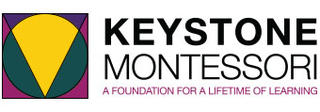Note: The following essay is excerpted from The Montessori Way by Tim Seldin and Paul Epstein, copyright 2003 by The Montessori Foundation. www.montessori.org
There are more than four thousand Montessori schools found throughout the United States. Montessori schools are also found in North and South American nations, throughout Europe, Africa, Asia, Australia, and New Zealand. Some schools only offer early childhood programs; others offer early childhood through elementary or secondary. Most are private or independent schools, founded either by an individual teacher or a parent board. There are a growing number of public school programs, and many home schools implement aspects of the Montessori approach.
Each Montessori school is built upon the educational legacy of Dr. Maria Montessori and her influential work, which began nearly one hundred years ago. Since 1907, the year of her first school, children and adults have engaged in an approach to learning that addresses all aspects of growth: cognitive, physical, social, emotional, and spiritual. In Montessori schools throughout the world, children develop the habits and skills of lifelong learning. Guided by teachers trained to observe and identify children’s unique learning capabilities, children learn in educational partnership with their teachers. Because children’s interests are heard and honored, Montessori students develop confidence and become self-directed. A powerful learning formula emerges as a result of this self-directed, self-initiated orientation to learning. When interested, a child becomes self-motivated. Self-motivation leads to becoming self-disciplined. When self-disciplined, a child engages in a process of mastery learning and fully develops his or her potential. Dr. Maria Montessori called this a “normal” approach to education.
We call this The Montessori Way. The Montessori Way refers to: the knowledge of how children naturally learn; a curriculum based on that knowledge designed for the developmental needs of infants, toddlers, three-to six- year-olds, elementary, middle, and secondary students; a method of instruction involving learning how to observe and how to develop learning environments in which teachers challenge each child to extend fully his or her unique style of learning; a profession; a school characterized by calm, orderly, focused, and respectful learning behaviors; and, a person named Maria Montessori.
In 1907, Dr. Maria Montessori discerned a fundamental premise about children and humanity in general: All children are uniquely intelligent.
This premise challenged long-held beliefs about intelligence and the inherent nature of mankind as violent and competitive. Whereas Montessori wrote about unique, individual potential, it is more fashionable today to discuss each person’s “multiple intelligences.” This is the belief that intelligence is not fixed at birth and that the human potential is without limit. The validity of this belief has been confirmed by the research of Piaget, Gardner, Goleman, and many others. Accordingly, then, the practice of highly selective educational institutions requires further examination: Does the design and conduct of schools, including the forms of testing they use, privilege some forms of intelligence while ignoring others?
We know that each child is a full and complete individual in her own right. Even when very small, she deserves to be treated with the full and sincere respect that would be extended to her parents. Respect breeds respect and creates an atmosphere within which learning is tremendously facilitated. Montessori educators work with infants, toddlers, young children, and adolescents. In each age, we see an inherent tendency towards discovery, cooperation, kindness, and nonviolence. These observations challenge ideas about life and human motives in the social order, including subjecting millions of children to impoverished learning conditions.
Each day, children exhibit the vast wonder of the human spirit, the endless faces of intelligence, creativity, and inventiveness in Montessori schools throughout the world. This suggests a far richer and more pleasant, productive, and peaceful world than most of us have ever known or imagined.
The Montessori Way stands in sharp contrast to the current fervor to use children as measures of adults’ performances: Test scores, not complete potential; prescribed standards and objectives, not self-empowerment. Parents are required to accept a political definition of teacher effectiveness. Teaching “to” the test and rehearsed test taking may result in schools with test scores that reward adults with jobs and funding. But what is the cost to children? Why are too many children under this regime now denied music, art, physical education, recess — and, in some schools, science and history?
What is a child’s daily experience of sitting in classrooms led by anxious or even frightened teachers waiting to be graded by these scores? Current brain research urges adults to establish learning environments that are stimulating and relaxed; intriguing and safe for exploration. Thinking, problem solving, and forming trusting relationships are all possible once a child is freed from stress.
“When interested, a child becomes self-motivated. Self-motivation leads to becoming self-disciplined. When self-disciplined, a child engages in a process of mastery learning and develops his or her potential.”
SHARING A COMMON PHILOSOPHY AND APPROACH …
Although Montessori schools may appear different, they all share a common philosophy and basic approach. The Montessori approach has four great qualities: this educational model is replicable; it can be adapted successfully to new situations; it can include educational innovations based on recent understandings of learning; and, it is sustainable, operating in many schools continuously for fifty years or longer.

